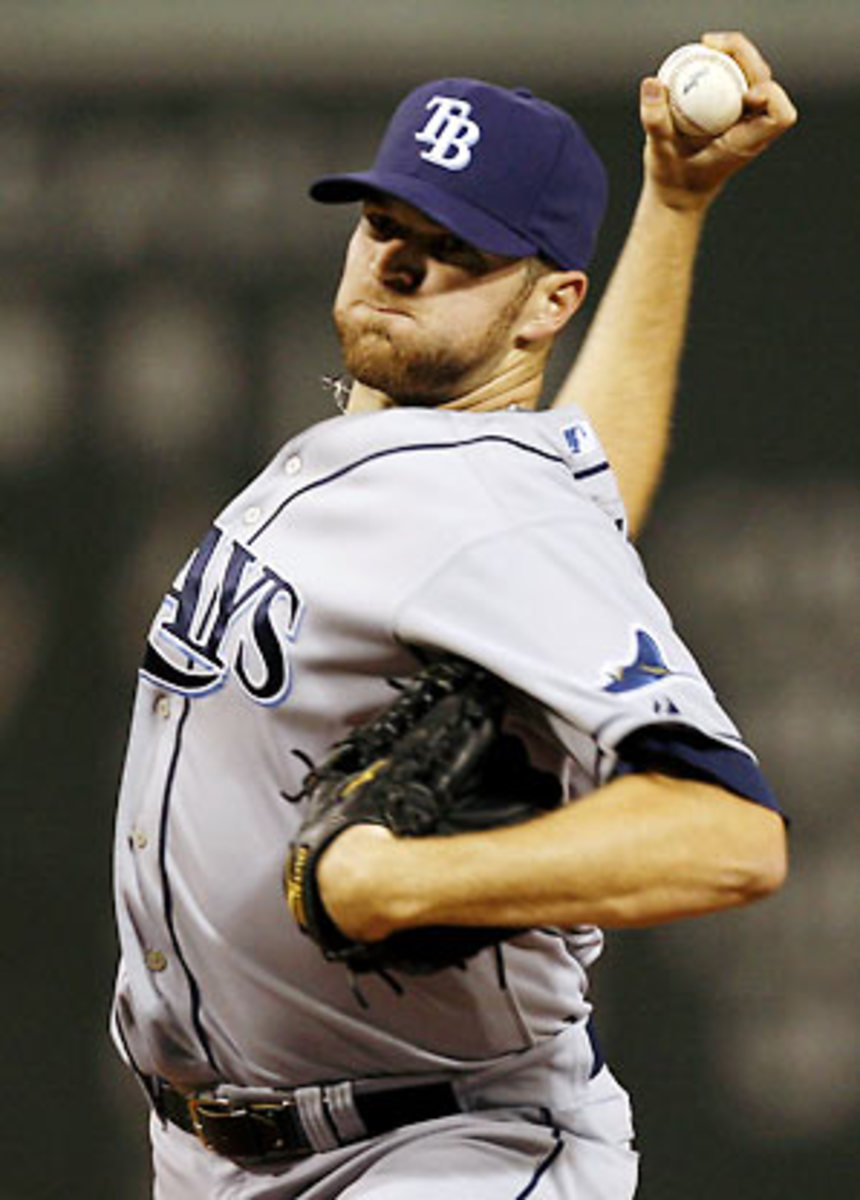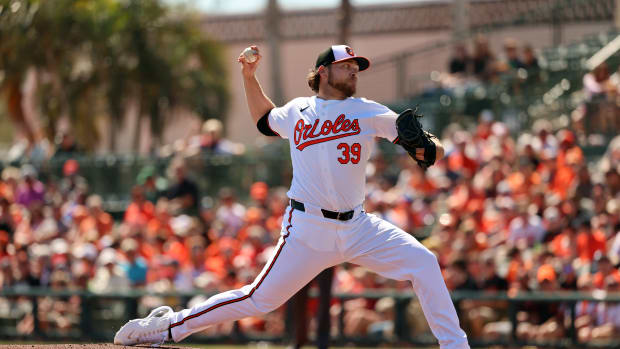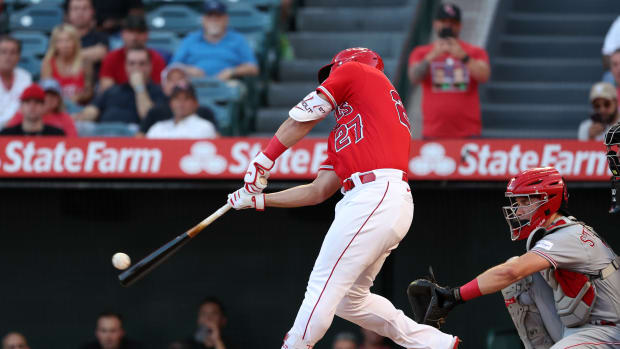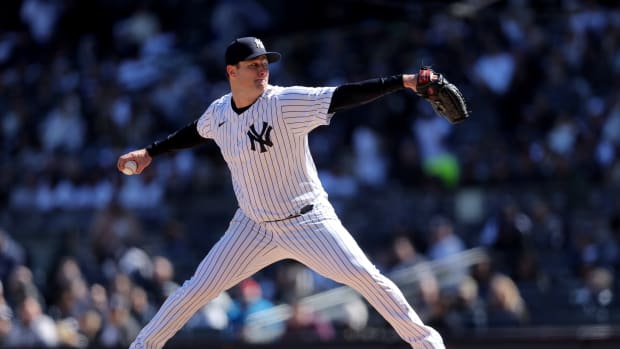Which rookies will have the biggest impact in 2010? Start with these 12
The Rising Stars game a couple weeks ago in the Arizona Fall League featured plenty of young talent, but it wasn't the prospect showcase that it could have been. Several of the truly elite players in the AFL this fall didn't play, including Nationals right-hander Stephen Strasburg (out with a mild neck strain), Braves outfielder Jason Heyward (gluteus muscle strain) and Marlins outfielder Mike Stanton (back pain). In fact, Heyward and Stanton were sent home from the AFL in October, but it doesn't significantly affect their blue-chip status.
The Arizona Fall League, and its new showcase Rising Stars game, still is a good place to see top prospects, and it's a place to look for 2010 potential impact rookies. It's so early in the offseason that the opportunities for these players aren't necessarily clear, but they should have the right combination of opportunity and talent to at least contribute in 2010. (Note: Alcides Escobar and Neftali Feliz qualify as rookies by BA standards, but may not in terms of MLB service time.)
Free agent Bengie Molina has openly lobbied for another year in San Francisco, and Molina is a solid veteran. Posey, however, is an athletic hitter with .300 potential, plate discipline and solid power, plus he has the potential to be an above-average defender. His $6.2 million bonus as the Giants' 2008 first-round pick, and a 2009 season that included stints in Triple-A, the big leagues and AFL, should have him prepared to replace Molina.
Strasburg is a natural choice, but so is Storen, if Washington keeps him in the bullpen. He helped pitch Stanford to the College World Series in 2008 as a freshman closer and reached Double-A in 2009, showing a mid-90s fastball and power breaking ball. He sneaks in a solid changeup as well, stoking the possibility that he could wind up as a starter. Mike MacDougal is no sure thing at closer and Storen throws more strikes anyway, making it likely that he'll step in as closer sooner than later. He gave up the game-losing homer in the Rising Stars Game, but that was the first home run he has allowed as a pro.
No organization is better at developing toolsy outfielders than the Rays, who have produced the likes of Carl Crawford, Rocco Baldelli, Josh Hamilton and B.J. Upton. Jennings is the latest in this line and has five-tool potential, though his power will be just average. He's also more disciplined at the plate than the rest of that crew and stayed healthy in 2009, playing a key role late in the season to help Durham win the Triple-A championship game. He's a potential answer to the Rays' revolving door in right field, or a replacement in center if Upton is traded.
Davis impressed in six late starts for Tampa after spending most of the last two seasons in Triple-A. He has polished the command of his power repertoire, which includes a 90-94 mph fastball and a pair of hard breaking balls. The Rays' starting-pitching depth is impressive, but Davis has proven himself ready, and injuries and trades are likely to open a spot for him in the rotation.
Acquired in the 2008 Mark Teixeira-to-Atlanta trade that revolutionized the Rangers, Feliz came to the majors in August and showed one of the majors' most electric arms. His fastball sat in the upper 90s but tired a bit late, leaving him "only" in the mid-90s. Feliz is the Rangers' Joba Chamberlain; he has already shown that he can be an impact reliever, but what if he can start? He struggled some in Triple-A with command and with inconsistent secondary stuff, but the Rangers would love to get 150 or so innings out of him as a starter if he can handle the workload.
No rookie has a clearer opportunity than Escobar, who is one at-bat on the right side of qualifying as a rookie. The Brewers are hoping to be better up the middle defensively, and Escobar and Carlos Gomez -- acquired from the Twins in exchange for Escobar's predecessor, J.J. Hardy -- should go a long way toward accomplishing that. Escobar's bat keeps improving as he matures physically. From a fantasy standpoint, he should produce a bit more than Elvis Andrus did last year, with similar stolen-base potential and more doubles power.
Texas is letting Hank Blalock go, and Chris Davis showed last year that his swing-and-miss tendencies could continue to undermine his insane power potential. Enter Smoak, a 2008 first-round pick and smooth-swinging switch-hitter whose stance evokes his idol growing up, Chipper Jones. Smoak had an uneven season but saved his best for last, earning MVP honors and hitting nine home runs to lead Team USA to the gold medal at the World Cup in September. He's also an asset defensively and should take over sooner than later as Texas' first baseman and a middle-of-the-order threat.
Alvarez is already on the 40-man roster, and the Pirates are looking to get a return on the $6.33 million investment that they made on him as the No. 2 overall pick in 2008. Alvarez also can still handle third base at this stage of his career, making him more valuable now than he will be later when he has to move to first. The Pirates could use his left-handed power and lineup presence, and already have made noise about moving Andy LaRoche from third to second.
Pittsburgh's got lots of problems to address and starting pitching is certainly one of them. They've got capable left-handers in Zach Duke and Paul Maholm, and could use a power right-hander or two (or three) to go with them and Ross Ohlendorf. Lincoln should be ready to fill the role. The 2006 first-round pick had Tommy John surgery in 2006, missed 2007 and was fully healthy in '09, when he pitched 160-plus innings counting his stint with Team USA. He's still trying to regain the feel for his power curveball, which remains inconsistent, but he's got a power, low-90s fastball that he uses aggressively to both sides of the plate, as well as a solid changeup.
Baltimore has some pieces in place in its rebuilding but needs offense at the infield corners. Snyder, a 2005 first-round pick and son of a big leaguer (pitcher Brian), has polish and a smooth right-handed swing that helped him dominate Double-A last year. He got out of his game trying to hit for power at Triple-A and doesn't figure to be more than a 15-20 homer threat. He does figure to challenge the .300 mark, and that might be enough when Matt Wieters is giving the Orioles 25 homers from the catcher spot.
Like Alvarez, Wallace is a 2008 first-round pick (by St. Louis, which dealt him in the Matt Holliday trade) and masher. He's less streaky than Alvarez, has a bit less pure power and is weaker defensively at third. Wallace has a sweet stroke from the left side, though, as well as a professional approach that fits in with the Athletics' team philosophy. Oakland's offense needs the help, so even if Wallace can't handle third base, he should see plenty of time at first base or DH.
The Indians traded a switch-hitting catcher with power in 2009 when they sent Victor Martinez to Boston. Santana is not the pure hitter that Martinez is, but he switch-hits, draws plenty of walks and has as much or more raw power. He'll probably settle in as a .260 or .270 hitter with 20 homers down the line, and he's a better thrower than Martinez was (or is). He hasn't played above Double-A, but the 2009 Eastern League MVP should be ready to challenge Kelly Shoppach for playing time on a rebuilding Cleveland club.




































